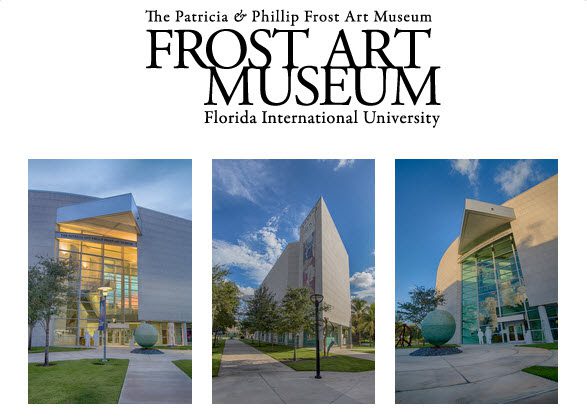Florida International University’s Frost Art Museum, the Smithsonian Affiliate in Miami, announces a powerful new season of exhibitions and programming for Art Basel Season 2018 in Miami. Headlining this year is Relational Undercurrents: Contemporary Art of the Caribbean Archipelago (Oct. 13 – Jan. 13), the first major survey of this size and scope of 21st century art by 67 contemporary Caribbean artists representing 14 Caribbean countries, whose works offer expansive perspectives that transcend the boundaries imposed upon Caribbean cultures. “Because of Miami’s geographic proximity to the Caribbean nations, as well as our cultural mosaic which Caribbean cultures have shaped, it was important for us to bring this exhibition to Miami during Art Basel season,” said Dr. Jordana Pomeroy, the Director of the museum. “Our new season opens up a dialogue about global commonalities rather than differences, from ecological changes to societal values around the world.”

Nearly seventy works by Caribbean painters, installation artists, sculptors, photographers, video and performance artists connect through ideas that go beyond language barriers, politics, and historic colonial divides. Artists in Relational Undercurrents include: Allora & Calzadilla, Edouard Duval-Carrie, Adler Guerrier, Deborah Jack, Glenda Leon, Beatriz Santiago Munoz, Angel Otero, Manuel Pina, Maria Magdalena Campos-Pons, Jimmy Robert and Didier William, among others.
The Writing on the Wall, presented by Hank Willis and Dr. Baz Dreisinger (through Dec. 9), is a collaborative installation that raises awareness about mass incarceration. The U.S. is the world leader in incarceration, followed by Rwanda and Russia. In the U.S. alone, there are 2.2 million people in the nation’s prisons and jails – a 500% increase over the last 40 years, according to The Sentencing Project.
On the gallery walls are essays, poems, letters, stories, diagrams, and notes written by individuals incarcerated in prisons around the world, including the United States, Australia, Brazil, Norway and Uganda. During her years teaching in prisons, Dr. Dreisinger compiled these materials consisting of hand-written or typed messages by inmates.
The Writing on the Wall is part of the monumental art project For Freedoms initiative, founded by artists Hank Willis Thomas and Eric Gottesman. The fifty-state initiative is the largest creative collaboration in U.S. history. Through non-partisan nationwide programming, For Freedoms uses art as a vehicle to deepen public discussions on civic issues and core values and serves as a hub for artists, arts institutions, and citizens who want to be more engaged in public life.
(installation photo by Zachary Balber)
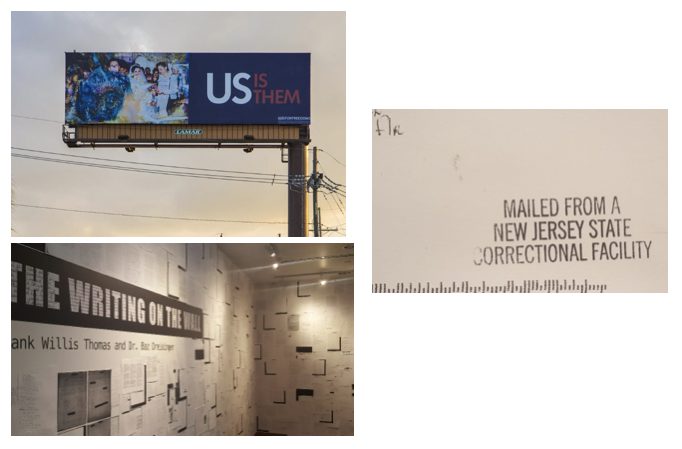
A platform for greater participation in civil society via exhibitions, installations, public programs, and billboard campaigns, the initiative For Freedoms advocates for inclusive civic participation. Inspired by Rockwell’s paintings of Roosevelt’s Four Freedoms (1941) – “freedom of speech, freedom of worship, freedom from want, and freedom from fear.”
The museum also presents the world premiere of its new exhibition Connectivity: Selections from the Collection of the Frost Art Museum FIU, showcasing recent gifts of art to the museum and celebrating the collection’s rich treasures, including rarely seen objects from the vaults collected over the past 40 years since the museum’s inception in 1977.
Select artworks will be rotated periodically every quarter. Artists include: Carlos Alfonzo, Cundo Bermudez, Edouard Duval Carrie, Maria Carreno, William Merritt Chase, Carlos Estevez, Leyden Rodriguez-Casanova, William Glackens, Francie Bishop Good, Alfredo Jaar, Pepe Mar, Ruth Orkin, Rene Portocarrero, Martine Puryear, Lorna Simpson, David Alfaro Siqueiros, Rafael Soriano, and Kara Walker among others.
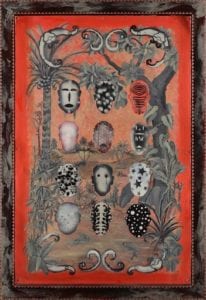
For the museum’s 15th annual Breakfast in the Park (an official Art Basel event Sunday, Dec. 9), internationally acclaimed sculptor Elizabeth Turk will be this year’s guest speaker at the popular breakfast held annually on the Sunday of Art Basel Week. Turk is known for transforming her signature medium of marble into intricate objects that defy conventions and perceptions.

More about the Exhibitions: Art Basel Season 2018
Relational Undercurrents: Contemporary Art of the Caribbean Archipelago
(October 13 – January 13)
Features more than 67 contemporary artists with roots in Haiti, the Dominican Republic, Cuba, Puerto Rico, Curacao, Aruba, Saint Maarten, Martinique, Guadeloupe, Trinidad, Jamaica, The Bahamas, Barbados and Saint Vincent. Departing from the premise that the concept of Latin America favors mainland countries, the exhibition proposes a mapping of the region that begins with the islands. Arising from a legacy of colonialism, recurrent themes include race and ethnicity, history, identity, sovereignty, migration and sustainability.

The works in this exhibition speak for the Caribbean’s indigenous peoples whose homes were fractured and divided by colonialism. These are spaces that were mercilessly exploited for labor and goods by distant European monarchies. This area also marks the site of one of the West’s first rebellions (the Haitian slave revolt which led to the independence of the island in 1804) and the Cuban War of Independence in 1898, a byproduct of the Spanish-American War.
The Caribbean is inhabited by many different indigenous cultures whose languages include Spanish, Dutch, English, French and Creole. Although the Caribbean has been fragmented by centuries of tyranny and domination, the contemporary artists in this exhibition draw upon themes of connection that often envision what lies beyond imposed borderlines.
Relational Undercurrents is curated by Tatiana Flores, Associate Professor of Art History and Latino and Caribbean Studies at Rutgers University, this exhibition was organized by the Museum of Latin American Art in Long Beach, part of the Getty Foundation’s Pacific Standard Time LA/LA.
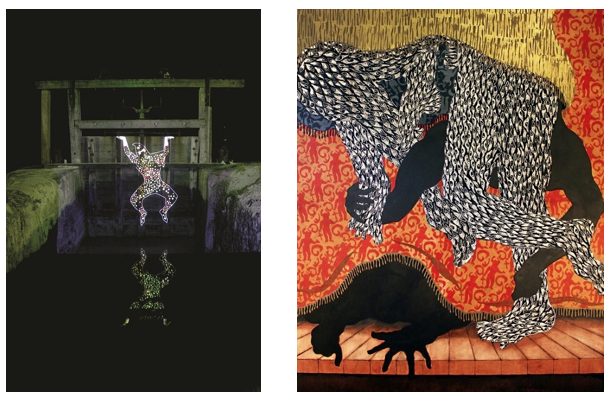
Conceptual Mappings
Artists in this section challenge the organization of traditional maps. In contrast to colonial maps, these artists create images that inspire a process of decolonialization, creating new spaces that suggest a more diverse, just and complex concept of the world.
Perpetual Horizons
Horizons are the prominent characteristic of island geography, representing boundaries and possibilities. Whether the artists in this section incorporate the horizon as a portal to the past or present, or as a representation of limit or potential, each artist in this section contributes to a common dialogue about this prominent feature where they live – offering strength in the acceptance of infinity.
Landscape Ecologies
The Caribbean is a region of shared ecosystems and inhabitants. Artists in this section depict landscapes in relation with to history, ecological issues, and current social and economic issues. Perceptions of the Caribbean have shifted throughout history from those of wonder, to fears of disease and degeneration during the height of colonialism.
Representational Acts
All Caribbean islands have seen their autonomy challenged through colonialism and foreign occupations. Political agency is elusive and, in many cases, unattainable. Representation takes on an urgency for artists in Relational Undercurrents, who actively reconfigure the world they inhabit through social practice and self-expression.
The Writing on the Wall: Hank Willis Thomas and Dr. Baz Dreisinger
(August 29 – December 9)
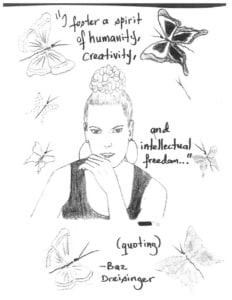 This collaborative installation by Hank Willis and Dr. Baz Dreisinger is a compilation of essays, poems, letters, stories, diagrams, and notes written by prisoners from around the world.
This collaborative installation by Hank Willis and Dr. Baz Dreisinger is a compilation of essays, poems, letters, stories, diagrams, and notes written by prisoners from around the world.
The work draws attention to mass incarceration, now firmly rooted in the U.S., and the Western prison system which has spread across the globe.
Between 1980 and 2015, the number of people incarcerated in America increased from roughly 500,000 to over 2.2 million. (image on the left: detail from The Writing on the Wall, courtesy of Dr. Baz Dreisinger and Hank Willis Thomas, 2018)
Though African Americans and Hispanics make up approximately 32% of the U.S. population, they comprised 56% of all incarcerated people in 2015.
One in every 37 U.S. adults is under some form of correctional supervision. In Florida, 177,000 people are behind bars. (Sources: NAACP and the Prison Policy Initiative)
The written and typed materials were created by inmates, and were gathered by Dr. Dreisinger in the prisons where she taught. The focus of the exhibition shifts from venue to venue, in accordance with the selected writings on view.
The exhibition is part of the For Freedoms initiative founded by artists Hank Willis Thomas and Eric Gottesman, a platform for civic engagement, discourse and direct action for artists in the United States. The exhibition coincides with FIU’s Common Reading Program and First Year Experience courses.
Connectivity: Selections from the Collection
of the Frost Art Museum FIU
(A permanent exhibition with rotating artworks)
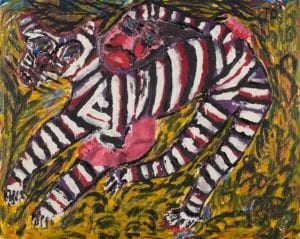
Drawn from a diverse collection, Connectivity examines how art objects, created across cultures and during different time periods, can relate to one another and to a myriad of audiences. The exhibition is divided into five sections. In the first section, individuality is explored through portraiture and figure representation.
Shifting notions of dress, gesture and pose are also examined. The second section considers belief systems, with an emphasis on myths and organized religion. Abstract languages are featured in the third section, offering viewers an opportunity to analyze color, line, and form. In this section paintings donated by Dennis and Debra Scholl by contemporary Aboriginal women are placed alongside postwar examples of abstraction created by U.S and Latin American Artists.

A sense of place plays an important role in many of the artworks, and in the fourth section, place and location are shown as creative catalysts or inspiration in the creation of these artworks. The final section reflects our present-day lives impacted by the effects of war, climate change and a collective sense of anxiety. Works in this section include Mario Carreno, Alfredo Jaar, and a collaborative sculpture by Miami-based artists Francis Trombly and Leyden Rodriguez-Casanova.
“Connectivity allows the museum to celebrate the incredible generosity of donors and to highlight collection strengths such as Cuban painting and contemporary work by self-taught artists,” said the museum’s Chief Curator, Amy Galpin. “Organized thematically, these works invite unexpected conversations between objects created across time and different geographic spaces. The exhibition also emphasizes the museum’s considerable collection of Haitian art and the work of Miami-based artists found in the permanent collection.”
The 15th Annual Art Basel Breakfast in the Park Presents: Elizabeth Turk
(Sunday, December 9 from 9:30 a.m. – noon. Free event, RSVP required in advance)
An official Art Basel week event, Breakfast in the Park attracts art collectors, patrons, gallery owners, cultural luminaries and artists from around the world, many of whom are visiting Miami for Art Basel. Each year a noted sculptor is invited to speak. This year, Elizabeth Turk has been invited to Miami as the guest speaker. Guests enjoy a complimentary outdoor breakfast, informal lecture and guided tours of Florida International University’s Sculpture Park and the exhibitions in the museum. View the Sculpture Park’s artwork here. Presented in partnership with West Kendall Baptist Hospital.
Elizabeth Turk is an internationally recognized sculptor known for transforming her signature medium of marble into intricate objects that defy our preconceptions about marble. Through the use of electric grinders, dental tools and files, Turk pushes her medium to its limit, creating in each sculpture a provocative tension between the strength of the stone and its fragility, while addressing larger conceptual and spiritual concerns of time, matter and space.
Born in Pasadena and raised in Orange County, California, Turk earned her MFA at the Rinehart School of Sculpture, Maryland Institute College of Art in Baltimore. She is the recipient of numerous national awards, including a MacArthur Foundation Fellowship, a Barnett and Annalee Newman Foundation Fellowship, and a Smithsonian Artist Research Fellowship. Her work is in private and pubic collections nationwide including the Los Angeles County Museum of Art, the National Gallery of Art (formerly the Corcoran Gallery of Art). and the National Museum of Women in the Arts in Washington, among others.
About the Patricia & Phillip Frost Art Museum at Florida International University
One of the largest free-standing art museums in Florida, the Frost Art Museum at Florida International University was founded in 1977 and is the Smithsonian Affiliate in Miami. The museum’s new lakeside building debuted in 2008, designed by Yann Weymouth (the chief of design on the I.M. Pei Grand Louvre Project). With 46,000 square feet of energy efficient exhibition, storage, and programming space, the museum was honored with LEED silver certification.
The museum’s mission is three-fold: to be a campus resource for the entire FIU community; to offer interdisciplinary training in the arts for the next generation of artists and art historians; and to serve as a premier cultural destination for the residents of Miami, and the 15 million visitors to one of the world’s most vibrant cultural destinations – home to global cultural events including Art Basel.
The museum offers programming that complements its exhibitions with a wide range of educational initiatives. Admission to the museum is always free. The Frost is accredited by the American Alliance of Museums and is located at 10975 SW 17 Street. Open Tuesday-Saturday 10:00 a.m.- 5:00 p.m., and Sunday noon-5:00 p.m. Closed on Mondays and most legal holidays. The Sculpture Park is open every day. More information at frost.fiu.edu or 305-348-2890.


